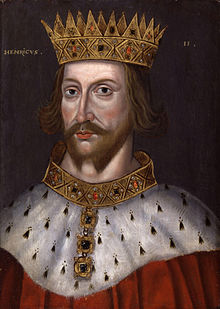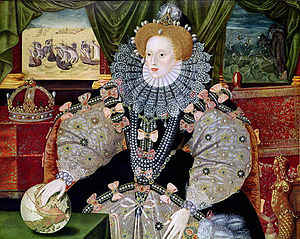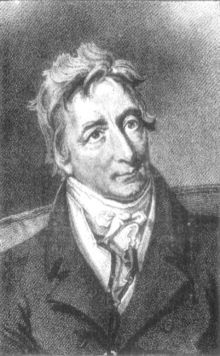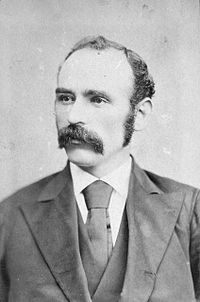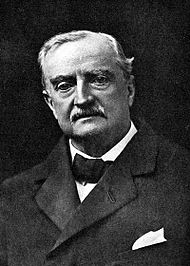It is generally accepted that the term ‘Home Rule’ is a nation’s desire to self-government without outside interference. To cover this subject in Irish history, it is necessary to go back many centuries and this essay will cover some of the events and changes which resulted in the Ireland we live in today.
On the subject of Home Rule, many historians would take us back to Brian Boru’s victory at the battle of Clontarf in 1014. He has come to symbolise the Irish spirit of resistance and determination to self-rule. History relates how he was the first Irish King to unite the whole of Ireland. If the various kingships in Ireland had stayed united after his death then the history of Ireland may have been different in the generations that followed.
The Norman invasion in the twelfth century, which came about as a result of internal squabbling between the Irish kingships, was the start of English involvement in Ireland for over the next eight hundred years. The invasion was sanctioned by Henry the second who was the King of England, and he had the support of the Pope who granted him the right to take control in Ireland in order to reform the church. In time, the Normans who settled in Ireland started to use Irish customs and many married into Irish families. Later in history this group became known as the Anglo Irish. Many of the Celtic Irish did not want the Normans; and this is not surprising when we consider that many of the Irish people lost vast tracts of land to the invaders.
In 1315 Edward the Bruce landed in N. Ireland with a force of two hundred ships. He was offered the kingship of Ireland by Domhnall O Neill, who had a weak claim to the Irish throne, in return for defeating the English. Although Edward had some success in battle, he was eventually defeated and killed at the battle of Dundalk in 1318. Ravaged by the Scottish invasion, the famine that followed, and the arrival of the Black Death in the 1340s, Ireland was left a wasted and depopulated land.
Powerful English Noblemen owned vast amounts of land, especially around Dublin and the midlands, and they paid little attention to what happened on their Irish estates. Most of them preferred to live in England and we see a similar trend in Ireland during the seventeen and eighteen hundreds. During the fourteen and fifteen centuries the people of Ireland were divided into three distinct groups, the Gaelic, the Anglo-Irish and the newly arrived English who settled mostly around Dublin.
The next major change to the way of life in Ireland was in the sixteenth century when Henry VIII came to power. The fall-out with Rome resulted in Henry becoming the head of the Church in England and he also sought to extend his control here in Ireland. In 1536 he arranged for the dissolution of the monasteries and the recognition of the English King as the head of the Church of Ireland.
Elizabeth I saw the last Gaelic stronghold in Ulster fall with the defeat of O Neill and O Donnell. Their departure became known as the Flight of the Earls. The departure of O Neill and O Donnell resulted in the Plantation of Ulster. In the beginning, the plantation was not successful. In the 1640s the people had to suffer the ravages of Cromwell’s army as it marched through the land. Many were killed and in some instances women and children were sold into labour on the Caribbean island of Montserrat. Cromwell’s plunder and atrocities left the greatest manmade population upheaval in Irish history. This was followed by the battle of the Boyne in 1690 and the flight of the ‘Wild Geese in the nineties. The introduction of the Penal Laws in the early 1700s kept the Irish people in a virtual state of slavery. This was a far cry from a thousand years earlier when Ireland was known as the Land of Saints and Scholars. The period during the seventeen hundreds and most of the eighteen hundreds became known as the Protestant Ascendancy and the Irish Catholics became one of the poorest classes of people in Europe.
It wasn’t long before the ascendancy classes in Ireland had major differences with the British government. The English Parliament could enact any legislation in Ireland and use this power to suppress any industry that might affect markets in England. They destroyed the woollen industry by banning the export of Irish wool. In 1720 Jonathan Swift, author of’ Gulliver’s Travels’, called upon the Irish population to boycott all English goods. He became the unintentional father of Irish nationalism. The mid 1700s saw the rise of a new group in the Irish Parliament – the Patriots, and their goal was to achieve parity with Britain. They found a champion in Henry Grattan. He formed the Irish Volunteers and many Catholics also joined the ranks. The Volunteers quickly became a force for political change and the period during the eighties and nineties became known as Grattan’s Parliament.
When restrictions against the sale of Irish cattle in England were lifted, this closed off significant areas of common land for grazing at the expense of many Irish Catholics. These changes also affected many of the new settlers and secret societies were formed by the Ulster Presbyterians and the Catholics. They launched their own reign of terror against the landlords by burning property and maiming animals. They also battled each other as both groups were competing for the little land which was left for leasing.
In 1793 Henry Grattan and Wolf Tone met with the English Premier William Pitt and a number of the Penal Laws were overturned. However, Grattan’s bill proposing full Catholic emancipation met with defeat and this resulted in rebellion in 1798. In response, the British Parliament brought in the ‘Act of Union’ in 1800 and Ireland was ruled directly from London.
After Henry Grattan died in 1820, Daniel O Connell found a loophole in the Penal Laws and he became the first catholic elected to Parliament. He was a key figure in obtaining Catholic Emancipation in 1829. With the help of the Young Ireland movement, and their newspaper, The Nation, O Connell turned his energy to the Repeal of the Union. He led around forty MPs and they pushed for the repeal of the Act of Union. Along with Gavin Duffy and Thomas Davis in the Young Ireland movement, O Connell favoured a separate independent Parliament for Ireland with no interference from London. As large gatherings were banned in Ireland, O Connell was arrested for organising huge demonstrations. On his release, he tempered his views and only called for a Parliament in Dublin to decide on domestic issues. As a result, the Young Irelanders withdrew their support for O Connell. Their revolution in 1848 during the famine came to nothing and the movement collapsed. James Stephens, who was one of the leaders, survived the revolution and in 1858 he formed the Irish Republican Brotherhood. In America, John O Mahony founded the Fenian movement. The failed Fenian revolution in 1866 along with the I.R.B. revolution in 1867 were disorganised and lacked leadership.
After the uprising in 1848 Isaac Butt, who originally favoured the Union with Britain, defended captured revolutionaries. He also defended captured revolutionaries after the uprising in 1867. Isaac Butt formed the Home Rule party in 1870. He favoured a return to the days of Grattan’s Parliament when Ireland and Britain stood independently under the same monarch.
Charles Stewart Parnell succeeded Isaac Butt as leader of the party and with the support of Michael Davitt and the Land League some progress was made in Parliament. The Home Rule Party was aided to some extent by the fact that William Gladstone who was the English Premier at the time made justice for Ireland his priority. Henry Grattan, Daniel O’ Connell, Isaac Butt, and Charles Parnell preached a non-violent solution to the Irish problem. They were among the best writers and orators of their day. With the Land League in support, Parnell advocated a policy of shunning. The people refused to deal with any landlord who unfairly evicted their tenants or any Irish who took up rent of the newly available land. This period was known as the Land War.
One of the main barriers to Home Rule for decades had been the House of Lords and many Home Rule bills were rejected by them. Their power was reduced when in the early 1900s Parliament passed an act which stated that a bill presented for the third time could not be rejected by the House of Lords.
After Parnell, John Redmond led the party and he was in a good position in 1910 as Asquith’s Liberal party needed the Irish Nationalist Party to form a government. Redmond wanted Home Rule in return for his support but the Ulster Protestants wanted their voice heard and they formed strong alliances with the opposition parties. Home Rule was enacted in 1914 but suspended until after the war. Many in Ireland did not want the issue to be put on hold any longer and the Easter Rising took place in 1916. The troubles continued for another few years and finally in 1920The Government of Ireland Act created Parliaments in both the north and south of Ireland. The Irish Free State was formed in 1922.


